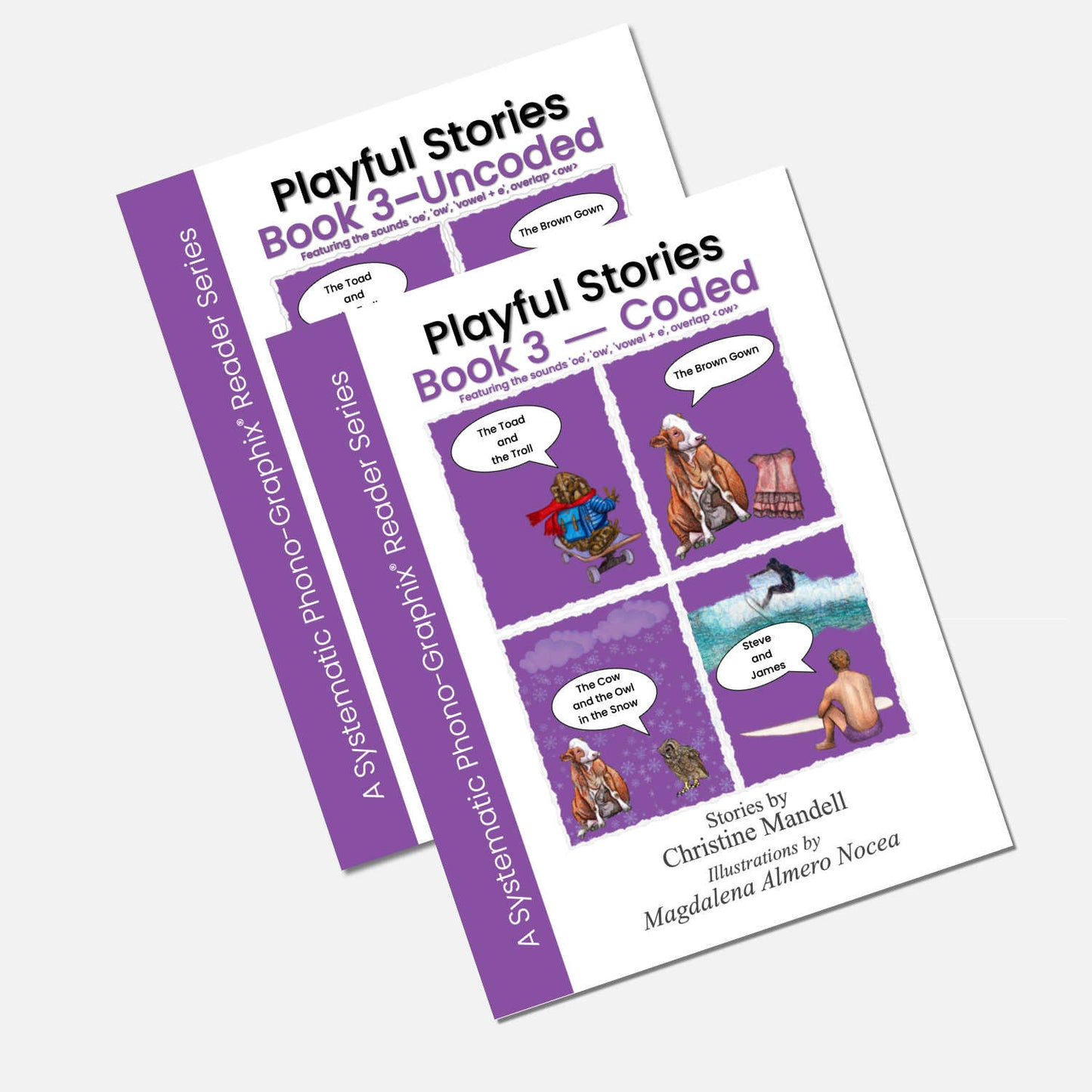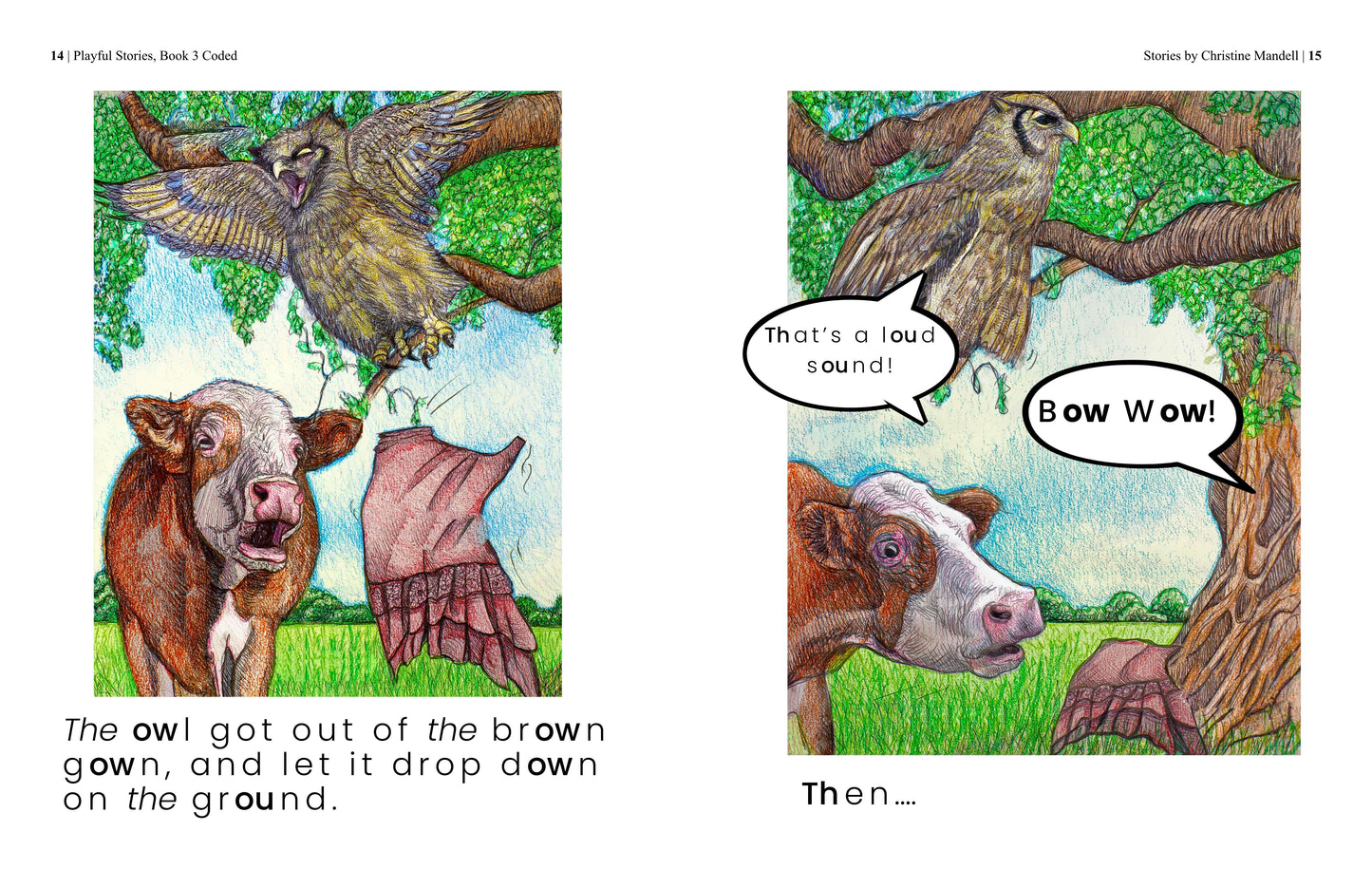Playful Stories - Systematic Phono-Graphix Reader Series: Book 3
Playful Stories - Systematic Phono-Graphix Reader Series: Book 3
Couldn't load pickup availability
After many years in the making, it’s finally here: a systematic reader series aligned to Phono-Graphix!
Humorous stories, written by talented author and Phono-Graphix practitioner Christine Mandell, appeal to children’s innate sense of playfulness; beautiful illustrations delight young and old.
This 12-book series introduces children to the entire code, from the first few Basic Code sounds, through all the Advanced Code word lists, to managing multisyllable words with special endings.
As with all things Phono-Graphic, this series is made for teaching, not just practicing, reading. An extensive instructional section presents how to effectively teach someone to read as they read a book.
- Each book is presented in two volumes:
- a phono-graphically coded volume — to make the nature of the code more apparent and make it possible for many students to read who might not otherwise be able to.
- an uncoded volume — to give students an immersive experience in a 'real book'.
- ‘Controlled text’, made up of words that are limited primarily to the sounds and syllable structures that have been introduced so far
- Careful response to errors that ensures students decode stories with the same phono-graphic approach taught with individual words in other Phono-Graphix lessons.
- Playful activities that naturally stem from the reading get children up and moving.
- Extension ideas for meaningful Phono-Graphix lessons embedded in the literature.
Book 3 of the Series: ideal for emerging readers or ages 6-10
Aligned with the lessons and word lists of the third level, Purple/Advanced Code, of Phono-Graphix, which continues to work with:
- the concept that letters are pictures of sounds
- the three phonological skills needed for reading and spelling any word
- the Basic Code, the sounds in English commonly represented by a single letter
while introducing the rest of the nature of the English written code, in an evidence-based, clinically-tested sequence:
- That sounds can be represented by 2 or more letters
- That every sound can be spelled in various ways
- That some of the 'sound pictures' (symbols for sounds) 'overlap': are used to represent 2 or more different sounds.
Book 3 features the letter-to-sound correspondence for the various spellings of:
- the sound 'oe' (as in 'toe')
- the sound 'ow' (as in 'cow')
along with:
- the concept that pictures (symbols) of sounds can be separated ('vowel +e', as in 'home')
- the overlapping sound picture <ow> that can represent either the sound 'oe' (as in 'slow') or 'ow' (as in 'cow')






